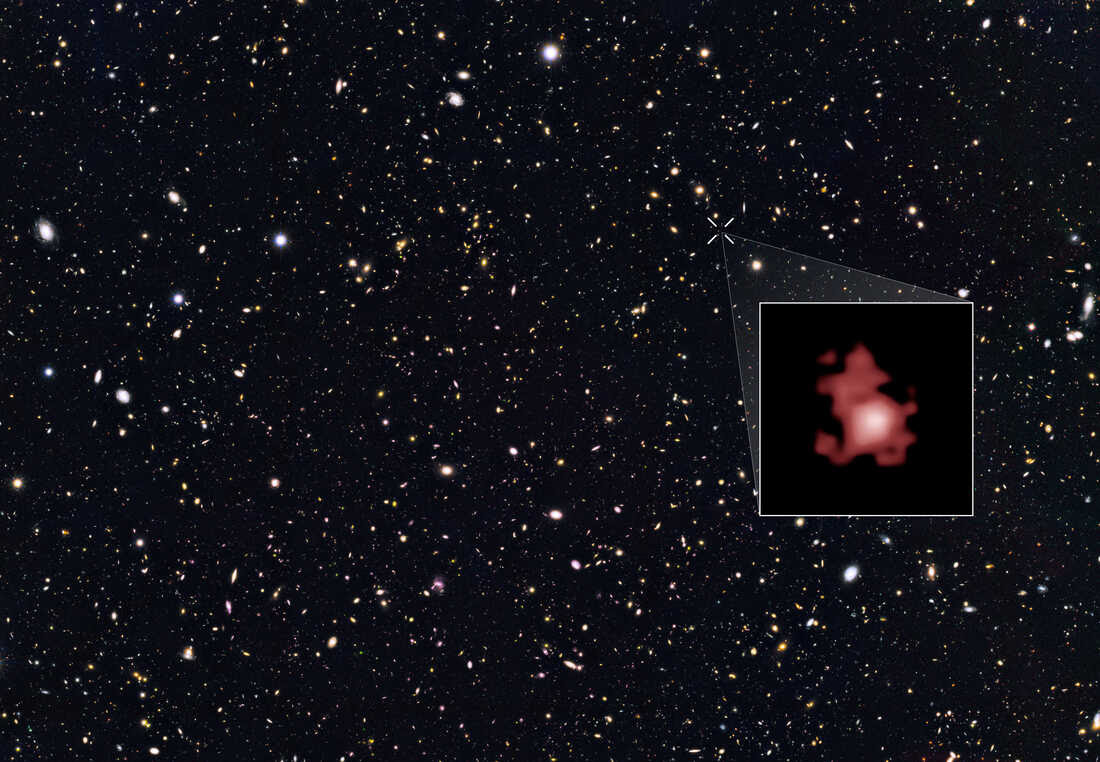Less than seven days after the revelation of the first images of the James Webb Space Telescope, the most powerful ever conceived, it could already have found the most distant galaxy ever observed, which existed 13.5 billion years ago.
Named GLASS-z13, it appears to us as it was only about 300 million years after the Big Bang, 100 million years younger than the previously observed record, said Rohan Naidu of the Harvard Astrophysics Center.
Rohan Naidu is the lead author of a study analyzing data from the first James Webb observations. The data is being made available online to astronomers around the world.
One of the main objectives of this brand-new telescope is to observe the first galaxies formed after the Big Bang, which occurred 13.8 billion years ago.
It is well known that astronomy allows us to see far away and to go back in time. For example, the light from the Sun takes eight minutes to reach us, so we see it as it was eight minutes ago. By looking as far away as possible, we can perceive objects as they were billions of years ago.
This paper has not yet been peer-reviewed, but published as a “preprint” to be quickly accessible to the expert community. It has been submitted to a scientific journal for publication soon, said Rohan Naidu. But already, many astronomers were commenting enthusiastically on the discovery on social networks.
“Records in astronomy are already shaking,” tweeted Thomas Zurbuchen, Nasa’s associate administrator for science. “Yes, I tend only to applaud when faced with peer-reviewed scientific results. But this is very promising!” he added of the study.
Moreover, another research team has also concluded the same results, according to Rohan Naidu, which “gives him confidence”.
The new galaxy was seen by James Webb’s NiRcam instrument, and detected in what is called a “deep field”, which is a wider image taken with a long exposure time to detect the faintest glow.
The advantage of James Webb is that it works only in the infrared. The light emitted by the oldest objects has stretched and “reddened” on the way, passing in this wavelength not visible to the human eye.
In order to get an image of this galaxy, the data was “translated” into the visible spectrum. It then appears as a circular shape, red, rather blurred and white in its center.
It is clear that the twenty or so researchers who participated in the study studied two galaxies, the other being called GLASS-z11, less distant.
The galaxy has surprising characteristics, for the little already known: “They appear quite massive,” according to Rohan Naidu, and this, from “very soon after the Big Bang.” “This is something we don’t understand,” he added. When exactly did they form? It’s impossible to say at this point.
“There’s still work to do,” the researcher said. He and his colleagues have asked for more observing time with the telescope to perform spectroscopic analysis – a technique for determining the properties of a distant object via analysis of the light captured. This should allow confirming their distance.
The James Webb Telescope launched into space about six months ago. Worth 10 billion USD, it was placed 1.5 million kilometers from us.
It has enough fuel to operate for 20 years. Astronomers expect to be supplied with new cosmic discoveries for a long time to come.



Comment here